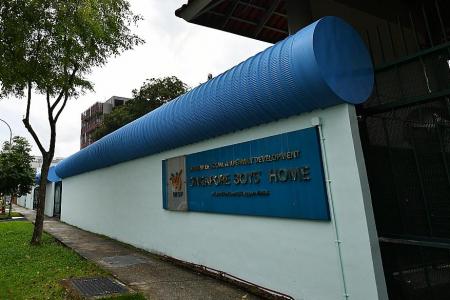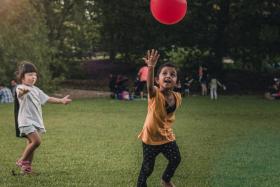More parents seeking help to manage their children
New Beyond Parental Control cases highest since 2009, but youth home admissions at 15-year low
New Beyond Parental Control (BPC) cases have gone up, even as new admissions to the youth homes run by the Ministry of Social and Family Development (MSF) fell to a 15-year low last year.
There were 85 new BPC cases last year, the most since 2009, according to preliminary MSF numbers.
Parents and caregivers can apply for a BPC order to get help to manage children with behavioural problems.
Not all children in such cases are admitted to a youth home, as they may be referred for counselling, given a caution or placed under supervision instead.
Of the cases last year, 58 complaints were filed against girls, and 27 against boys.
More BPC complaints are usually filed against girls, as parents tend to be more protective towards their safety, said experts. Some common fears include unwanted pregnancies.
The rise in BPC cases could reflect how some parents are less willing to invest in time to work with their teenage children, said Mr Tan Khye Suan, executive director of MCYC Community Services Society.
"Being aware of BPC, these parents feel that they could seek help for others to 'fix' their teenagers for them," he said.
For some troubled teens, however, the BPC order - and subsequent stay at a youth home - has helped them get their lives in order.
Anna (not her real name), a 17-year-old resident at the Singapore Girls' Home, said: "It helped me a lot. Now I know how to control myself, think better, know myself better, and differentiate who is my enemy, friend, or family."
Another resident credited the home's staff for helping her mend her relationship with her parents through events such as family conferences mediated by social workers.
"At first, it's hard, because some family members don't want to open up... but slowly we start to open up to each other," said 16-year-old Lydia (not her real name).
HELPING YOUTH-AT-RISK
More effective schemes to help youth-at-risk could have led to the drop in the number of young people admitted to youth homes last year, say observers.
New admissions to the Singapore Girls' Home and the Singapore Boys' Home fell to 141 last year, the lowest since 2002, according to the website of Department of Statistics.
Of these, 43 went to the girls' home in Defu Avenue, and 98 to the boys' home in Jurong West. This also marks the first time since 2002 that total admissions have fallen below 200. Each home can take in about 300 residents.
The homes are for young people who are in trouble with the law, beyond parental control or in need of care and protection, said MSF on its website.
A MSF spokesman said the fall in admissions reflects its preference for helping troubled youth in the community and not at institutional settings such as homes.
Experts and social workers said they were glad to hear that fewer young people were sent to the youth homes last year, which they attributed to recent initiatives to help at-risk youth.
MCYC's Mr Tan pointed to more concerted and targeted efforts by government agencies and welfare organisations to engage at-risk young people in the community, instead of sending them off to institutions.
One example of a community-based effort is the Streetwise programme, a scheme run by social service agencies that reaches out to youth involved with gangs.
While noting that the drop in admissions was encouraging, some called for more support for rehabilitation programmes for juvenile delinquents to help maintain or even reduce the low admission numbers to youth homes.
"When society is more supportive of rehabilitating these youth in the community, they will then feel safer and more comfortable to seek help regarding their issues," said Mr Amos Ng, deputy director and head of community and youth services at Trybe, a youth organisation.
Get The New Paper on your phone with the free TNP app. Download from the Apple App Store or Google Play Store now


